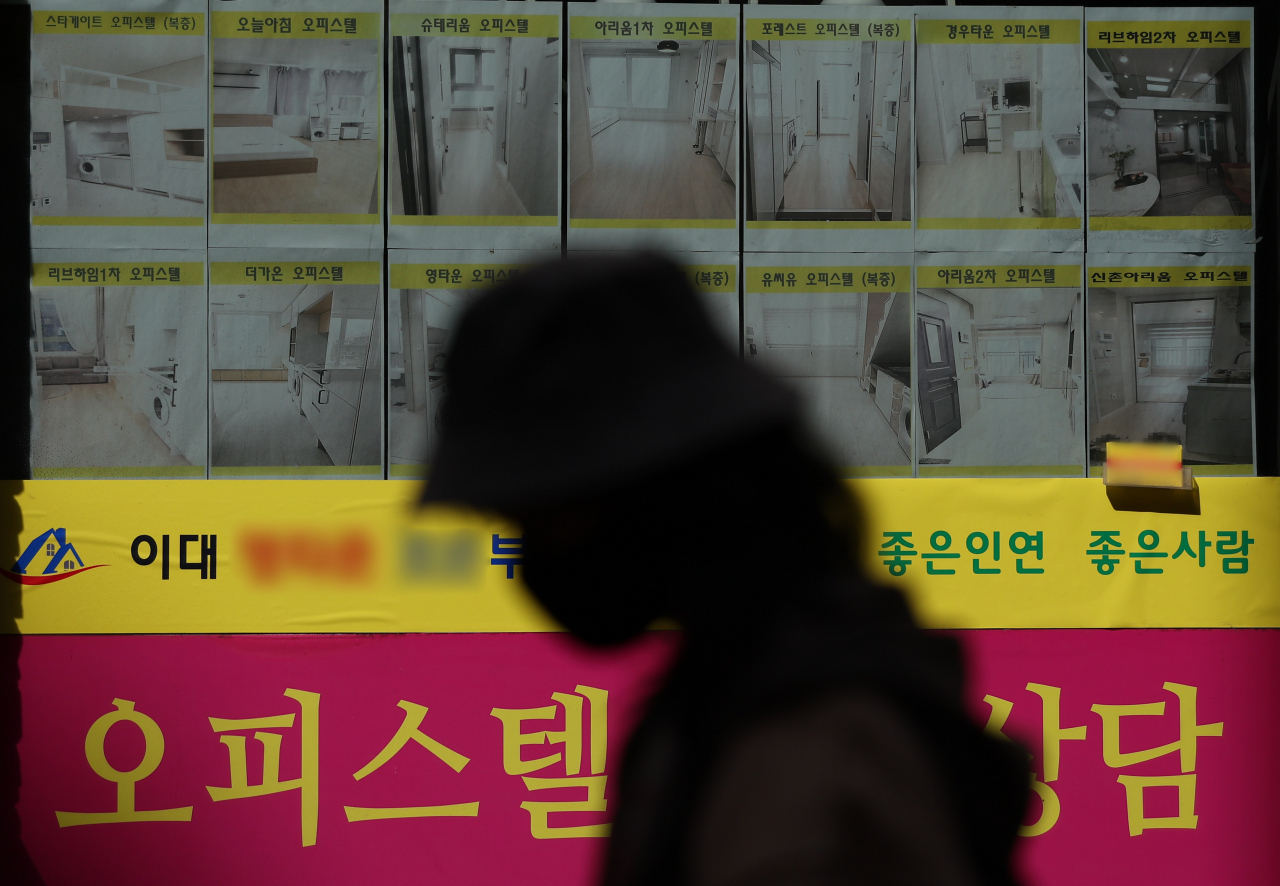
The number of South Koreans living alone rose above the 10 million mark for the first time in March, data from the Ministry of Interior and Safety showed Tuesday, as more older people opt to live alone than ever before.
Approximately 10.02 million households consist of one individual, accounting for 41.8 percent of the 24 million total households in the country, according to the ministry. The figure marked a slight increase compared to 9.98 million in the previous month.
Among the single-person households, 1.85 million were composed of those aged between 60 and 69, followed by 1.68 million consisting of those aged 30-39, and 1.64 million households with members from the 50-59 age group. Gyeonggi Province and Seoul, the two most populated regions in the country, had the most number of households consisting of one member: 2.25 million and 2 million, respectively.
By gender, there were 5.15 million single-male households and 4.86 million single-female households.
The ministry data showed that the number of smaller households has tended to increase, while the number of relatively bigger four-person households has been declining. Two-person households went from 5.89 million to 5.9 million and three-person households went from 4.03 million to 4.04 million from February to March, but the number of four-person households went from 3.12 million to 3.11 million during the same period.
A Statistics Korea report announced last month also showed that the number of single-person households was at an all-time high in 2022, accounting for 34.5 percent of all households here.
The discrepancy between the two government organizations' percentages reflecting single-person households' shares of the total is due partially to the difference in when the figure was tallied, but mainly by how they each define a single-person household.
Statistics Korea's criteria for defining a household is based on whether the members share a livelihood such as shared income -- regardless of whether or not they actually live together. Meanwhile, the Interior Ministry's definition of a household is based on where the person actually lives. For example, if a single child of a family lives temporarily apart from their parents due to studying, the ministry would count two households, whereas Statistics Korea would count one.
But the figures by both agencies make it clear that there have been substantial increases in both the number of single-person households and of older people living alone. According to Statistics Korea, there were 5.33 million single-person households of those aged 65 or above in 2022, three times the 1.73 million there were in 2000.
South Korea's population went from 47 million to 51.4 million in 2022, showing that the increase in single-dwelling older residents was far more significant than the general population's growth.
Approximately 23.8 percent of all single-person households consisted of senior citizens in 2022 -- an all-time high.






![[KH Explains] No more 'Michael' at Kakao Games](http://res.heraldm.com/phpwas/restmb_idxmake.php?idx=644&simg=/content/image/2024/04/28/20240428050183_0.jpg&u=20240428180321)



![[Grace Kao] Hybe vs. Ador: Inspiration, imitation and plagiarism](http://res.heraldm.com/phpwas/restmb_idxmake.php?idx=644&simg=/content/image/2024/04/28/20240428050220_0.jpg&u=)









![[Herald Interview] Xdinary Heroes shoot for the next level with 'Troubleshooting'](http://res.heraldm.com/phpwas/restmb_idxmake.php?idx=642&simg=/content/image/2024/04/29/20240429050745_0.jpg&u=)